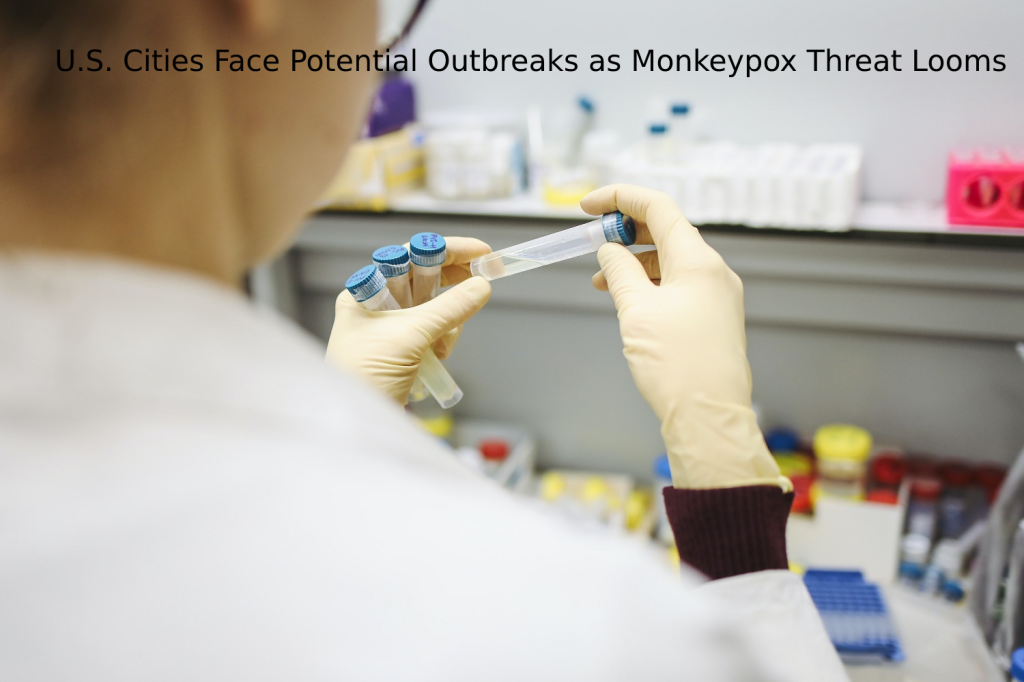U.S. Cities Face Potential Outbreaks as Monkeypox Threat Looms
- The monkeypox health emergency has concluded, but U.S. health officials are focused on preventing a recurrence of last year’s outbreaks.
- In 2022, monkeypox infections surged during Pride events, resulting in over 30,000 reported cases in the United States. The majority of these cases were transmitted through sexual contact among gay and bisexual men, leading to approximately 40 fatalities.
- As Pride events are scheduled nationwide in the upcoming weeks, health officials and event organizers express optimism that this year’s infections will be reduced in number and severity. This positive outlook is attributed to factors such as a larger vaccine supply, increased immunity among the population, and improved accessibility to monkeypox treatment drugs.
- However, there is concern that some individuals may underestimate the ongoing monkeypox risk, perceiving it as a problem from the previous year. Dr. Demetre Daskalakis, an advisor to the White House on monkeypox response, warns against complacency, stating, “Out of sight, out of mind, but we are beating the drum.”
- Recently, the Centers for Disease Control and Prevention (CDC) issued a health alert to U.S. doctors, urging vigilance for new cases. Furthermore, the CDC published a modeling study that evaluated the likelihood of monkeypox resurgence in 50 specific counties targeted by a government campaign to combat sexually transmitted diseases.
- The study identified 10 counties with a 50 percent or higher chance of monkeypox outbreaks this year, primarily based on the number of individuals at high risk of infection and their level of immunity from vaccination or prior infection. Among the highest-risk cities are Jacksonville, Florida; Memphis, Tennessee; and Cincinnati, where 10 percent or fewer of the at-risk population were estimated to possess immunity. An additional 25 counties exhibit low or medium immunity levels, placing them at greater risk for outbreaks.
- It is important to note that the study has some limitations, including uncertainty about the duration of immunity from vaccination or past infections. Despite this, the purpose of the study is to raise awareness and caution. Dr. Chris Braden, who leads the CDC’s monkeypox response, emphasizes the significance of prevention and individual care, stating, “This is something that is important for jurisdictions to promote the prevention of monkeypox, and for the population to take note — and take care of themselves. That’s why we’re doing this.”
Preventing Repeat Outbreaks: Monkeypox Threat Lingers After Last Year’s Devastation
After the culmination of the monkeypox health emergency, U.S. health officials are diligently working to avert a recurrence of the previous year’s outbreaks. In 2022, monkeypox infections surged during the early summer, coinciding with Pride events. Disturbingly, over 30,000 cases were reported in the United States, predominantly transmitted through sexual contact among gay and bisexual men, resulting in approximately 40 fatalities.
As the country gears up for upcoming Pride events in the coming weeks, health officials and event organizers remain cautiously optimistic that this year will witness fewer and less severe monkeypox infections. Several factors contribute to this positive outlook, including an increased supply of vaccines, a larger portion of the population with immunity, and improved accessibility to effective monkeypox treatment drugs.
However, there is a concern that people might regard monkeypox as a problem of the past. “Out of sight, out of mind,” expressed Dr. Demetre Daskalakis, an advisor to the White House on monkeypox response. Despite this worry, efforts to raise awareness and combat the disease continue steadfastly.
Last week, the Centers for Disease Control and Prevention (CDC) issued a health alert to U.S. doctors, urging them to remain vigilant for new monkeypox cases. Additionally, the CDC recently published a modeling study, specifically focusing on 50 counties targeted by a government campaign to control sexually transmitted diseases. The study concluded that 10 of these counties have a 50 percent or higher likelihood of experiencing monkeypox outbreaks this year. The calculation predominantly considered the number of individuals deemed at high risk of infection and the proportion of those with partial immunity through vaccination or previous infection.
Jacksonville, Florida; Memphis, Tennessee; and Cincinnati top the list of cities where only 10 percent or fewer of the highest-risk individuals were estimated to possess immunity, putting them at considerable risk. Another 25 counties have low or medium levels of immunity, which increases their vulnerability to outbreaks.
The study faced limitations, including the lack of knowledge about the duration of immunity from vaccination or prior infections. However, its purpose remains crucial—to alert and warn the public. Dr. Chris Braden, who leads the CDC’s monkeypox response, emphasized the importance of this study in promoting prevention and urging individuals to take necessary precautions. “This is something that is important for jurisdictions to promote the prevention of monkeypox, and for the population to take note — and take care of themselves. That’s why we’re doing this,” he stressed.
